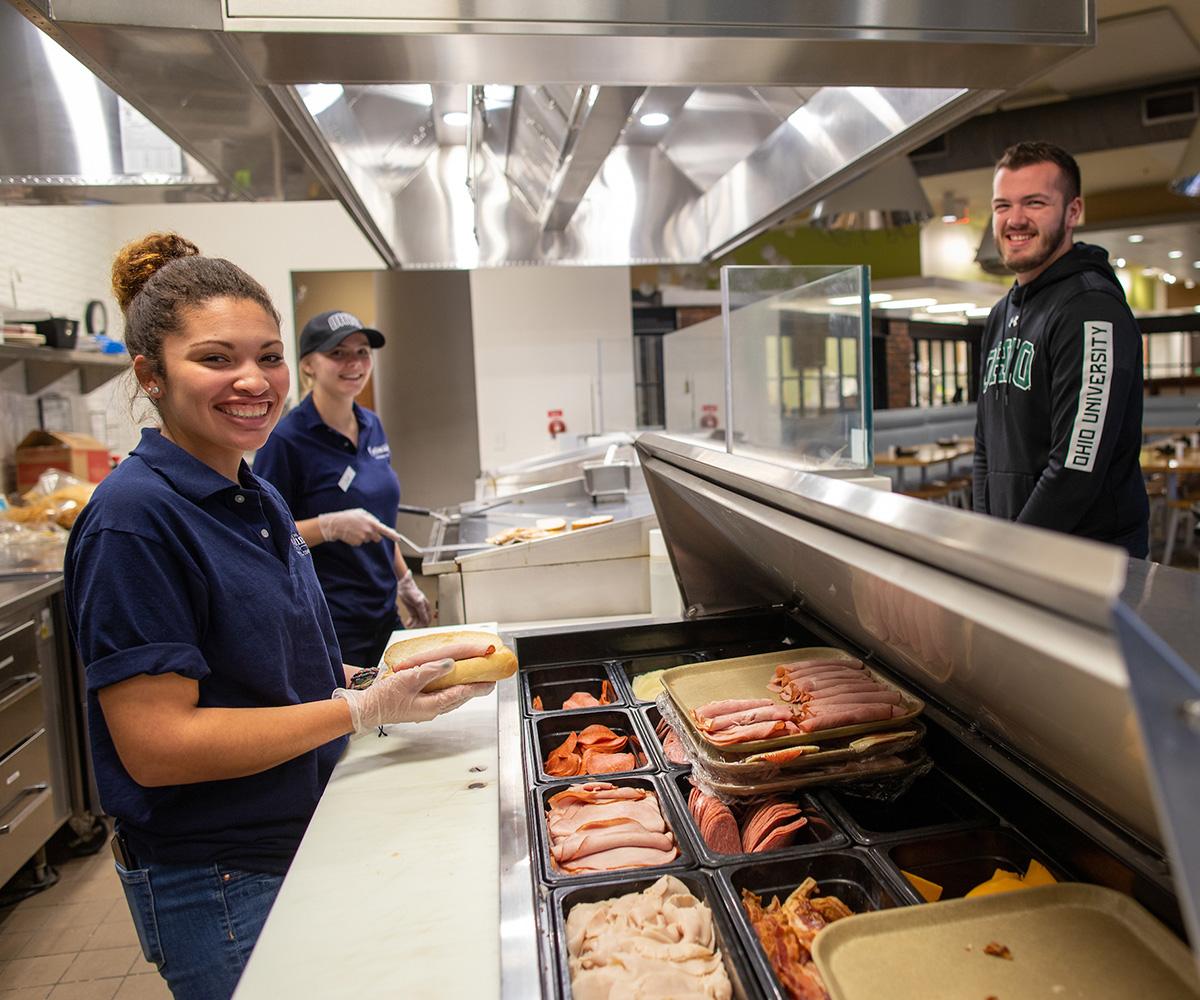F-1 students may choose to participate in Curricular Practical Training (CPT), which is any type of work, internship, cooperative education or other required internship by sponsoring employers through agreements with the school. Learn more about CPT eligibility, required conditions and how to apply.
F-1 Student Employment
International students on an F-1 visa may participate in various types of employment. This page will lay out the different types of employment, associated regulations, and the steps to receive authorization if required.
On-Campus Employment
F-1 students are authorized to work on-campus while attending classes. The work does not need to be related to your field of study. You must maintain legal F-1 status while engaging in on-campus employment.
Although there are some limited exceptions, on-campus typically means work performed when Ohio University is the employer (Alden Library, academic, and administrative departments, laboratories, dining halls, and Ohio University recreation facilities), on university property and paid by Ohio University. Please contact ISSS if you have questions about what qualifies as on-campus employment.
Eligibility and Regulations
- To obtain an on-campus position as an F-1 student, you must maintain valid F-1 status be enrolled in a full course of study during the academic year.
- You may work up to 20-hours per week on-campus during the fall and spring semesters.
- You may work up to 36-hours per week on-campus during vacation periods and official school breaks (winter break, summer break).
NOTE: Once you have completed all requirements for your academic program, you are no longer eligible for on-campus employment.
Find and Apply for On-Campus Jobs
You may find on-campus student employee positions a few ways:
- Visit the Ohio University Jobs website (opens in a new window) and search for open positions, which are posted as hourly student employment positions.
- F-1 undergraduate students are eligible for Program to Aid Career Exploration (PACE) (opens in a new window) positions. Get started by completing the online application.
- Alternatively you can call, email or stop in to the departments you are interested in working for and ask if they are currently seeking student employees.
Important Note: F-1 students are not eligible for Federal Work Study (FWS) positions.
Additional Employment Types
-
Optional Practical Training
Optional Practical Training (OPT) is one year of employment authorization that allows students to gain practical experience in their field of study. Learn more about OPT general eligibility requirements, pre- and post-completion eligibility OPT requirements, acceptable employment types, applying and more.
-
STEM OPT Extension
STEM OPT is a two-year extension of standard OPT for recent graduates who have completed their education in an eligible science, technology, engineering, or math degree program. There are many requirements so it is best to read through all of the information offered on our STEM OPT Extension page.
Unpaid Employment
It is never legal for an F-1 student to offer to perform work for free if that work would normally be paid. This includes work performed on campus, in labs or for research. Performing work that should be paid, without receiving salary, is a violation of both immigration and Department of Labor requirements.
Performing specific unpaid work, such as volunteer work and unpaid internships, is legal when they meet specific criteria.
Volunteer Work
Volunteer work with local charitable organizations does not require work authorization. The work must not be compensated in any way. Examples of this type of volunteer work include serving in a soup kitchen, helping take care of animals at a shelter or providing free tutoring to school children. You can find information about local volunteer opportunities at the Center for Student Engagement and Leadership.
Unpaid Internships
Unpaid internships are different than volunteer work and are more complex. Internships, both paid and unpaid, are primarily offered by the private sector and are related to the intern’s major field of study.
The U.S. Department of Labor has guidelines for those seeking an unpaid internship (opens in a new window).
The following six criteria must be met for an internship to be considered a legitimate unpaid internship (and not employment below minimum wage, in violation of Department of Labor laws):
- The internship, even though it includes actual operation on the facilities of the employer, is similar to training which would be given in an educational environment;
- The internship experience is for the benefit of the intern;
- The intern does not displace regular employees, but works under close supervision of existing staff;
- The employer that provides the training derives no immediate advantage from the activities of the intern, and on occasion, its operations may actually be impeded;
- The intern is not necessarily entitled to a job at the conclusion of the internship; and
- The employer and the intern understand that the intern is not entitled to wages for the time spent in the internship
Student Athletes – Name, Image, Likeness
U.S. laws allow student athletes to earn money based on a policy called Name, Image, Likeness (NIL). However, the immigration rules about employment override the NIL rules. International students must be very cautious when exploring NIL options so as not to violate their student visa.
Athletes will need to consult with both ISSS and an immigration attorney before accepting any NIL offers. ISSS and University Athletics prepared an informational form to help students understand the complexity of NIL and student visas.
